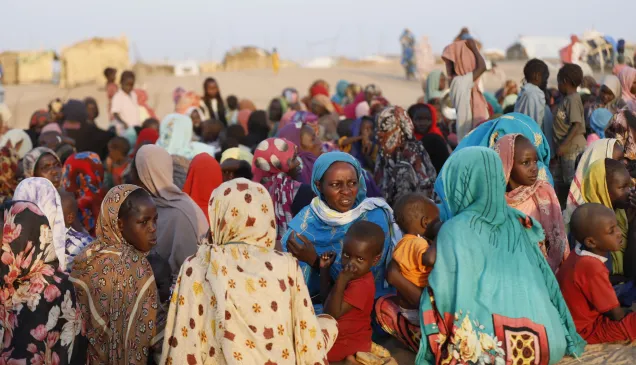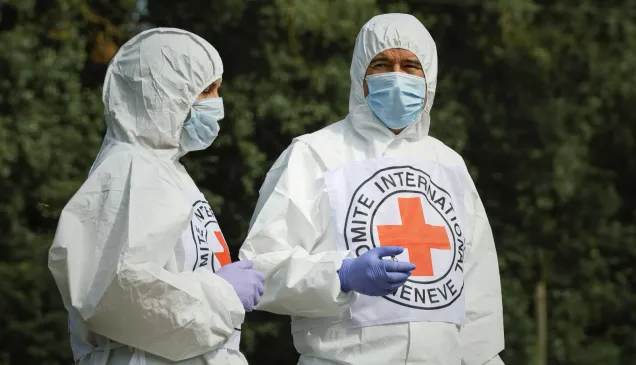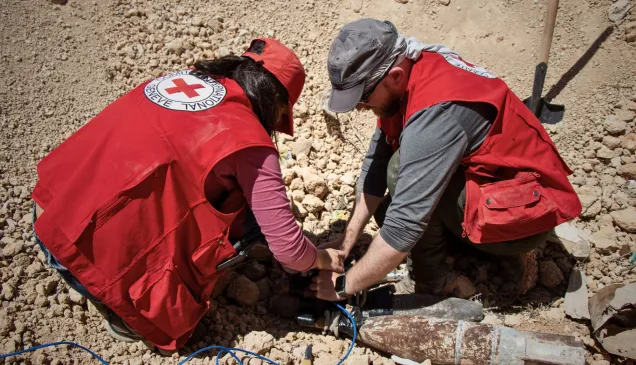Chemical warfare agents and many toxic industrial chemicals can penetrate the skin and can produce toxic effects .The correct use of the protective suit is critical. All skin must be sealed to avoid exposure.
In Pictures: Responding to chemical, biological, radiological or nuclear (CBRN) events.
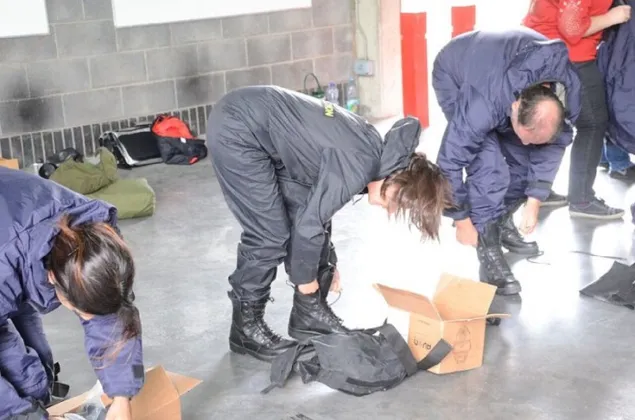
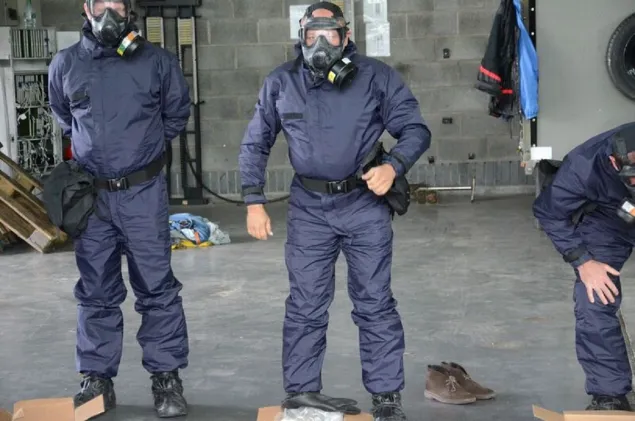
Protective suits and respirators are essential items for ICRC delegates going into situations where CBRN may have been used. Training on how and when to use such equipment is a key element of the Camp Curragh training.
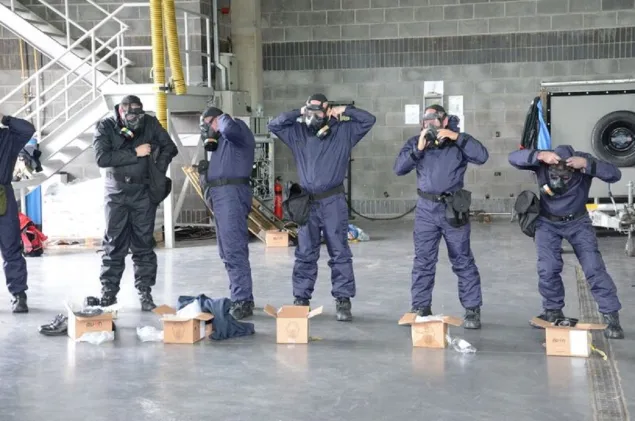
ICRC delegates may be required to undertake activities in locations where there is the potential release of chemical, biological, radiological or nuclear agents. Here, participants learn how to wear protective clothes and how to use respirators
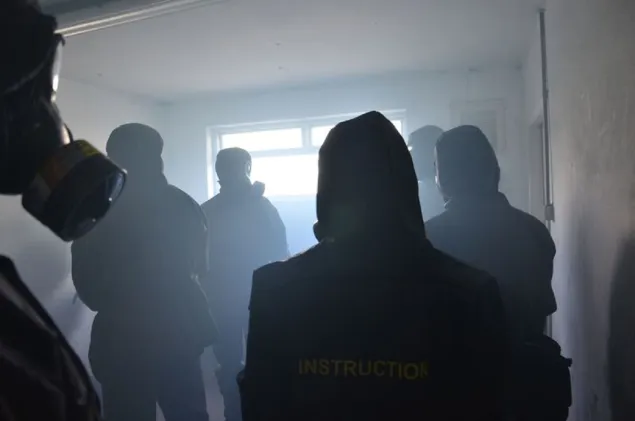
Simulations of chemical releases prepare delegates for real-life scenarios where incorrect use of a protective mask could prove fatal.
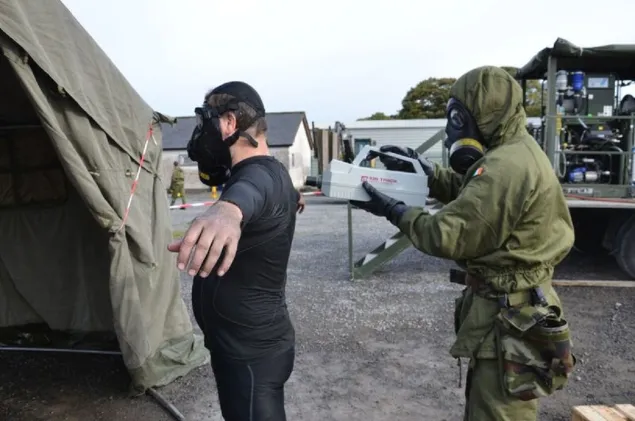
An Irish Army sapper uses a chemical detector to check for contamination during the decontamination process.
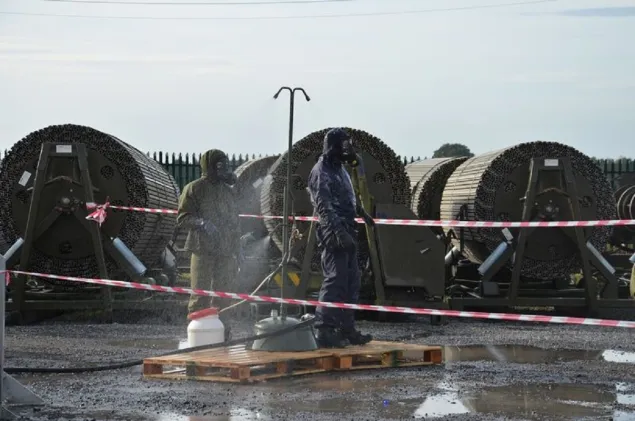
As part of the training, participants are taught how to follow a strict process of decontamination. The first step is ensure protective clothing is sprayed down with water-based decontamination solution
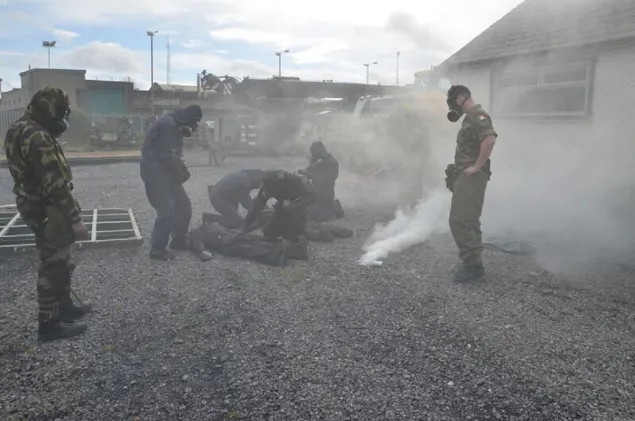
A simulation of chemical exposure incident. Participants attend to people exposed to CBRN agents and apply specialist field medical care and CBRN first aid techniques. A CBRN incident
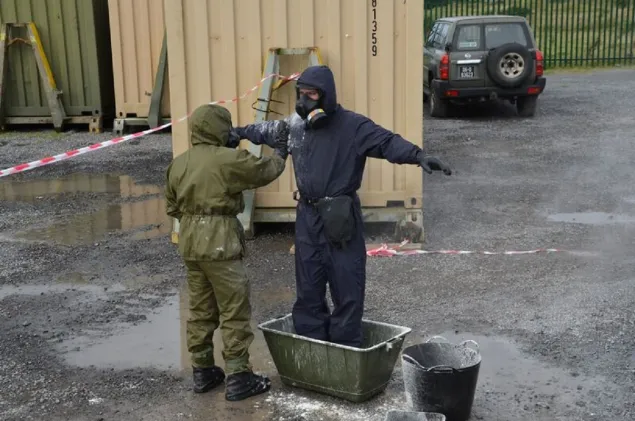
An army officer demonstrates the first stage of the decontamination process - the application of absorbent powder on the protective clothing. The individual then steps into the tub to decontaminate the soles of the overboot.
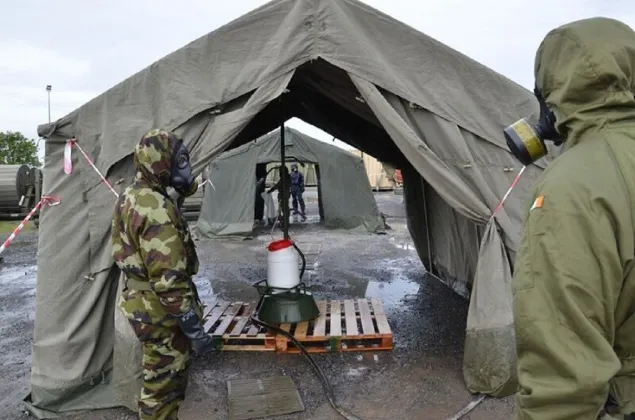
A simulation of a decontamination corridor, a series of tents that an at-risk person passes through on withdrawing from a contaminated zone
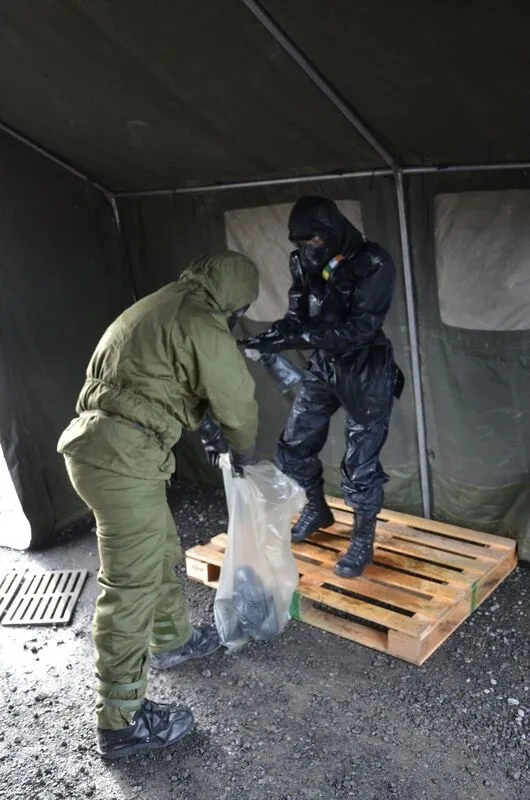
10. Participants are taught the correct way in which to remove contaminated clothing and to avoid putting themselves and others at risk. All clothing must be put into a sealed bag and disposed of safely.
ICRC delegates attend annual CBRN training at Camp Curragh military college, Ireland.
In September 2016, ICRC delegates working in conflict zones all over the world, attended a week-long CBRN training hosted for the second year in a row by the Defence Forces of Ireland. Throughout the week, participants were trained in how to protect themselves in the event of exposure to CBRN events and how to assist those affected by radioactive, biological or chemical substances.
"In conflict zones, there is a potential for intentional or unintentional release of chemical, biological, radiological or nuclear agents" said Stephen Donnelly, CBRN Technical Advisor in the ICRCs Weapons Contamination Unit. "It's essential that humanitarians workers understand exactly how to respond in situations of exposure of CBRN agents. They need to know how to both keep themselves safe and provide humanitarian assistance at the same time."
Mounting an effective international humanitarian response to CBRN event, especially if the response is undertaken on an ad hoc basis, would be extremely difficult and would pose many risks to the responders. Therefore regular basic training such as that at Camp Curragh is becoming a critical aspect of field training for ICRC delegates.

